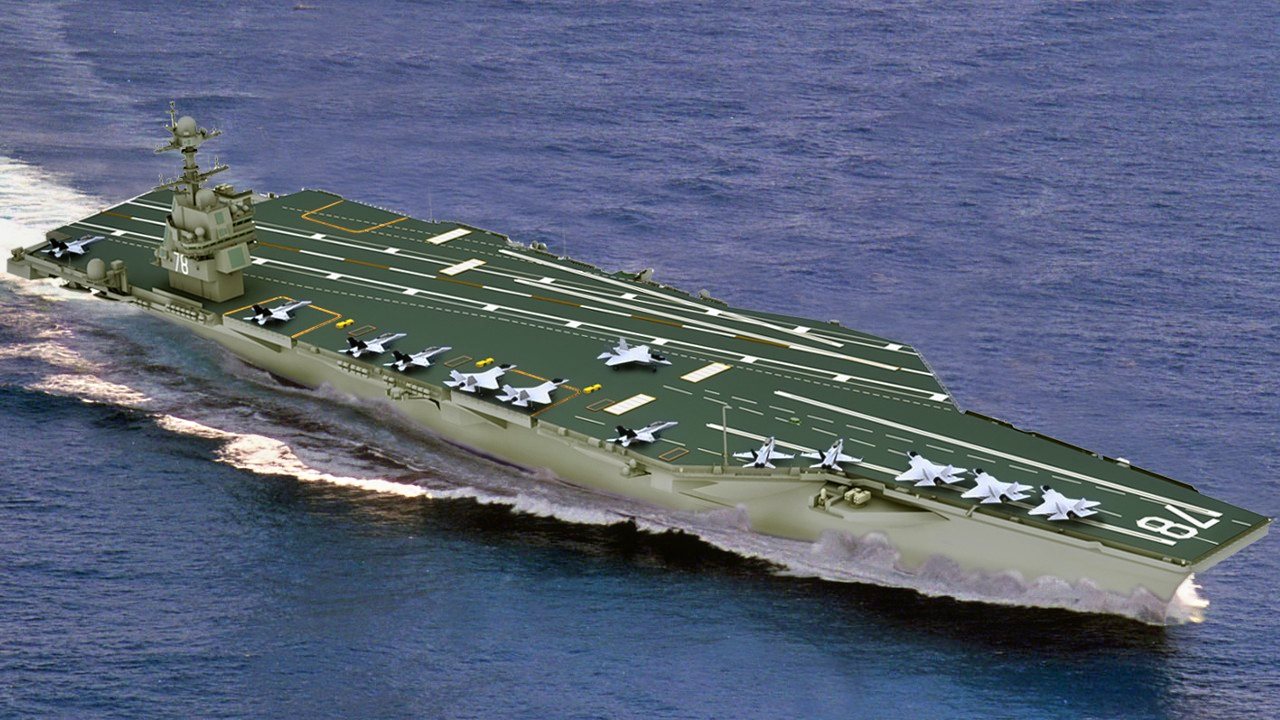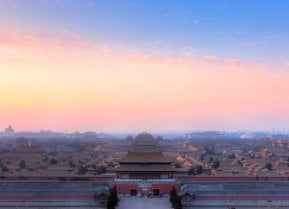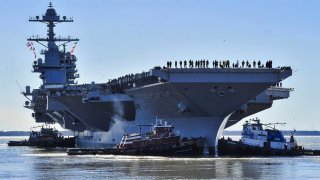Ford-Class: Why This Might be the U.S. Navy's Last Aircraft Carrier
The Ford-class aircraft carrier is the U.S. Navy's newest, most advanced vessel, set to replace the aging Nimitz-class. However, questions about the future viability of aircraft carriers in light of evolving anti-ship technology suggest the Ford-class might be the last of its kind if carriers become too vulnerable in contested environments.
Summary: The Ford-class aircraft carrier is the U.S. Navy's newest, most advanced vessel, set to replace the aging Nimitz-class.

-While the Nimitz has served since 1975, technological advances and rising costs have slowed the introduction of new carrier classes.
-The Ford-class features significant advancements like electromagnetic catapults and advanced arrested landing systems.
-However, questions about the future viability of aircraft carriers in light of evolving anti-ship technology suggest the Ford-class might be the last of its kind if carriers become too vulnerable in contested environments.
Is the Ford-Class Aircraft Carrier the Last of Its Kind?
The Ford-class aircraft carrier is the U.S. Navy’s newest and most sophisticated vessel to date – and the first new class of carrier since the Nimitz class was first built in 1968. Ten Nimitz carriers are still in service but will be phased out as the Ford comes online.
The succession of the Ford after the Nimitz follows a time-honored trend of Navy procurement. The Navy has been updating and replacing the carrier fleet since the vessel type first emerged, and especially since it became the centerpiece of the Navy during World War II.
But the rate at which aircraft carrier classes are designed, produced, and procured has slowed markedly as technological advances become more gradual and costs rise. Just consider the Nimitz’s shelf life. The class has been in service since 1975. In the half-century preceding the Nimitz’s debut, the Navy rolled through classes from the Yorktown to the Essex to the Kitty Hawk.

As the Navy introduces the Ford class, it is reasonable to wonder how long the new carrier class will serve. Given the Nimitz’s fifty-plus-year shelf life and the Ford’s exorbitant price tag of $13 billion per unit, we can reasonably expect the Ford will sail for a similar duration.
Yet unlike in the 1970s, when the Nimitz debuted, the future viability of the aircraft carrier is in question. Advances in anti-ship technology have raised questions about whether an aircraft carrier could survive in a contested environment. In turn it is fair to wonder whether the Ford might be the last class of U.S. aircraft carriers.
Could the Ford-Class be the last aircraft carrier?
Aircraft carrier technology advances more gradually relative to the earlier days of the vessel, when each system, from propulsion to aircraft launching, was constantly being improved. Today, the technology has stabilized – everything from nuclear power plants, catapults, arrested landing gear, ergonomic crew quarters, and aircraft elevators reached a point where the technology was advanced enough that innovation naturally plateaued. Similar plateaus affect other systems, from the airplane to the tank to the missile.
The Ford represents the first significant advancement in aircraft carrier technology in decades. Vessels in the class will feature novel upgrades like the electromagnetic catapult that will replace the steam-powered catapults found on preceding classes, and an advanced arrested landing system.

The Navy is still working out the kinks in the Ford’s new technology, a reminder that military innovation can be fraught and arduous. Once the tech is ready to go and finally rolled out, expect it to be several decades before the Navy wants to, or can, introduce a new carrier class.
The Navy will also want to gauge how viable the aircraft carrier is in the future. Recent events have demonstrated the vulnerability of surface vessels to smaller, cheaper defensive measures like unmanned drones and anti-ship missiles. As naval defense technology improves, the carrier may be further at risk. At present, the Navy is proceeding with building and buying aircraft carriers, suggesting they believe the vessel will be able to operate in future conflicts.

Should that assessment change, the Ford could mark the culmination of the aircraft carrier as a type.
About the Author: Harrison Kass
Harrison Kass is a defense and national security writer with over 1,000 total pieces on issues involving global affairs. An attorney, pilot, guitarist, and minor pro hockey player, Harrison joined the US Air Force as a Pilot Trainee but was medically discharged. Harrison holds a BA from Lake Forest College, a JD from the University of Oregon, and an MA from New York University. Harrison listens to Dokken.
All images are Creative Commons.
More from National Interest


